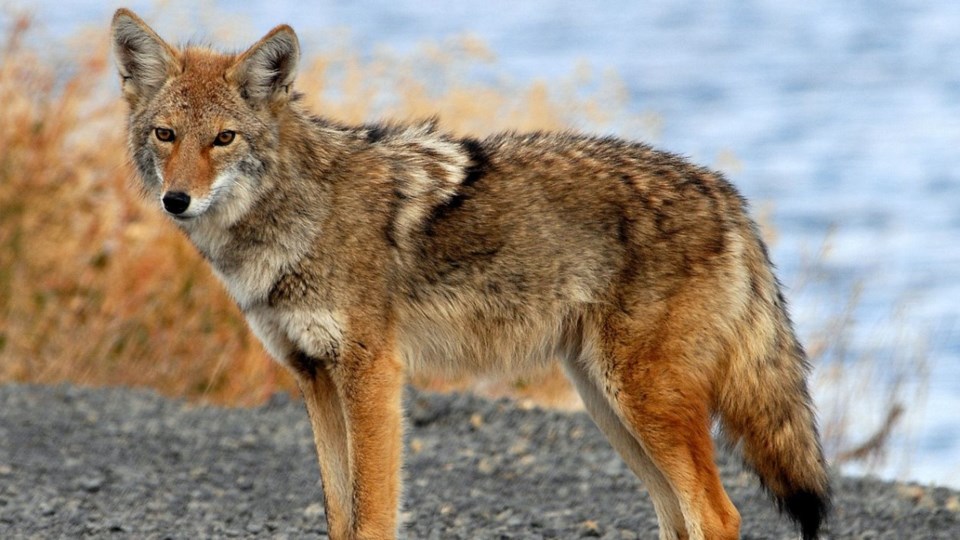You may have read reports of recent coyote sightings across Ontario, and an Orillia naturalist has some advice about how to handle interactions with the canines and how to keep family pets safe.
Coyotes mate in the winter, often from December to January, so they’re fairly active at this time of year, said Bob Bowles.
He has noticed a gradual increase in coyotes in urban areas.
“It’s mainly food supply,” he said of what drives coyotes out of the wild and into town.
However, he also suspects the coyote population might be rising, further encouraging them to come into urban areas to seek out food. That source of food is rarely pets, but it does happen.
Bowles’s advice to owners of pets, especially small dogs, is to “keep the dog on a leash and keep it away from the coyote because the dog will run toward the coyote.”
Domesticated dogs are typically less fearful and will run toward a coyote, he said.
“Dogs will approach other canines, even if they’re bigger.”
Much rarer than an attack on pets is an attack on humans, Bowles said, noting there are “hardly any records” of such incidents even at Algonquin Park, a busy spot for visitors of the human and coyote varieties.
Bowles suggests those who encounter coyotes act similarly to how they would if it were a bear: Make yourself look big and make a lot of noise.
But don’t run.
“That shows fear and they will probably follow you,” he said.
Like many wild animals that wander into urban areas, coyotes are attracted to garbage and compost.
Bowles wasn’t surprised to hear a coyote had been spotted last week near Matchedash and Neywash streets. He has seen them in various settings over the years.
In December 2016, he got a call from a friend who has property on Lake Couchiching in Orillia. A deer had been killed after being chased onto the frozen lake. Bowles determined three coyotes were behind the attack — one took the doe down and all three then feasted on it.
While there are many misconceptions about coyotes, “the biggest misunderstanding is people will say it’s a wolf, not a coyote.”
In the early 1900s, he explained, the western coyote migrated east and mated with the wolf, leading to the hybrid eastern coyote, which is what is now in this area.
For more information on what to do in the event of an encounter with a coyote, click here.



